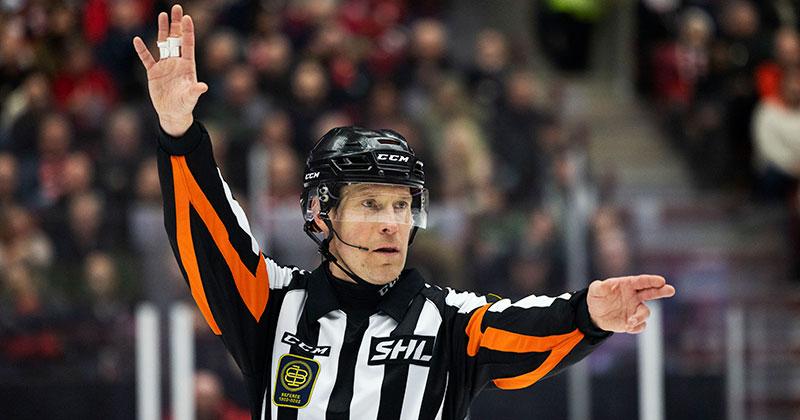Beginning with the Thursday night SHL round, all arenas are equipped with referee megaphones.
Sent messages, video reviews and goal ratings will be sent to the audience.
– The reason is to increase the track experience for those in the position, they should get something extra, says league chief referee Thomas Thorsbrink.
Like the NHL, decisions in the SHL will now be announced by key referees in the public discourse system.
It was previously located in Hockeyallsvenskan and to some extent in the SHL.
The previous difference with SHL is that the system is standardized and will be used in all matches from Thursday evening.
– We have a new updated internal communication system where the judges talk to each other. It is now connected to speakers so that the chief judges press a button to hear them in the ring. It is a large-scale technical installation. The technology and sound are better than when this was in SHL before, says Thomas Thorsbrink, and there wasn’t much lag.
Want to attract more audience
The system was tested at Skellefteå-Rögle on Saturday evening and Brynäs Örebro on Tuesday evening.
Now it is created when there is a full round with matches in Timrå, Leksand, Oskarshamn, Färjestad, Linköping, Växjö and Rögle.
The events to be managed by the referees are all outputs, video reviews and referees in goal situations.
Our basic idea is that we want to increase the understanding of the spectators. In the long run, we want people to learn more about what it’s about and how the rules work, so they want to come back and go for more games. Especially in situations where it is a goal or not, there are many who did not know what the referees looked at and how they judged, now this will be explained, for example, if the puck was not above the goal line or if Thomas Thorsbrink says that one of the players interfered with Goalkeeper command.
Trained by speech teachers
The design will be standardized so that it looks symmetrical and clear across all squares.
The rulers will stand in the same place on the ice, when they stand there everyone must familiarize themselves, know that something will be moved and prepare. It is also a fairly oriented text of what and how they should say, and it is produced not from the judgment side but from the communicative side of the SHL. Referees were trained by tutors in speaking with focus and pause, among other things. The text deals with the beginning and the end, and in the middle there is freedom and respite for the individual judge because they wish to have a chance to express themselves personally as well, says Thomas Thorsbrink.
The long-term idea is also for media partner C More to capture and output the audio in the live broadcast.

